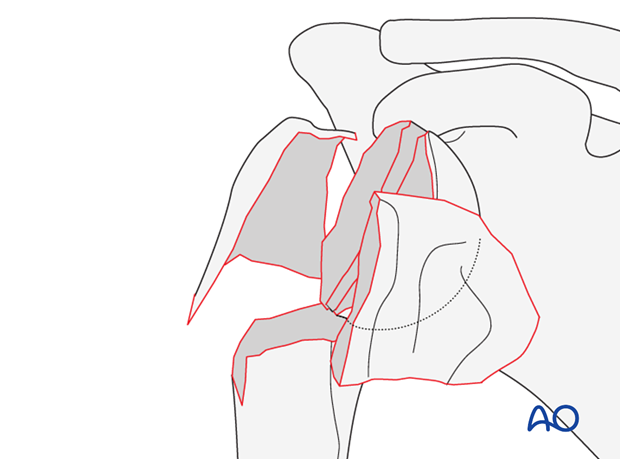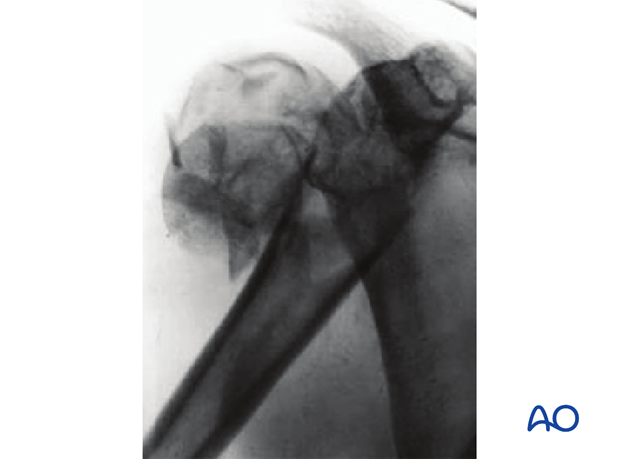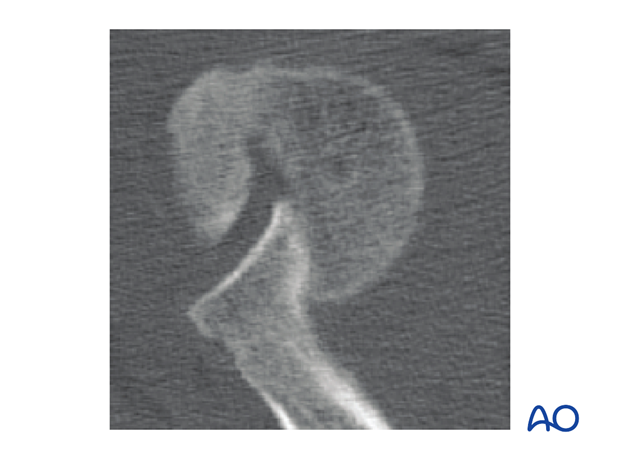4-Part, dislocation, fragmentary metaphyseal +/- fragmentary articular
These fracture dislocations are particularly severe because of extensive proximal humeral comminution. The articular surface may or may not be intact but there are multiple metaphyseal fragments. These fractures are particularly challenging not just because of the glenohumeral dislocation but also because of the multiple fragments of the proximal humerus. While reconstruction should be attempted in young patients, elderly and osteoporotic patients are better served by arthroplasty.
These fractures all involve a glenohumeral dislocation (head fragment displaced from glenoid fossa). An anterior dislocation is much more common than posterior. The risk of avascular necrosis is significantly increased by the combination of a dislocation with a fracture that devascularizes a small humeral head fragment or is comminuted. 4-part fractures according to Codman and Neer separate the proximal humeral epiphysis from both tuberosities and the metaphysis.

X-ray taken from Orozco R et al, (1998) Atlas of Internal Fixation. Used with kind permission.

Humeral head impaction
Impaction of the humeral head is a feature of some of these fractures. Impaction injuries should be identified and respected. Treatment protocols for these rare injuries remain to be developed.














